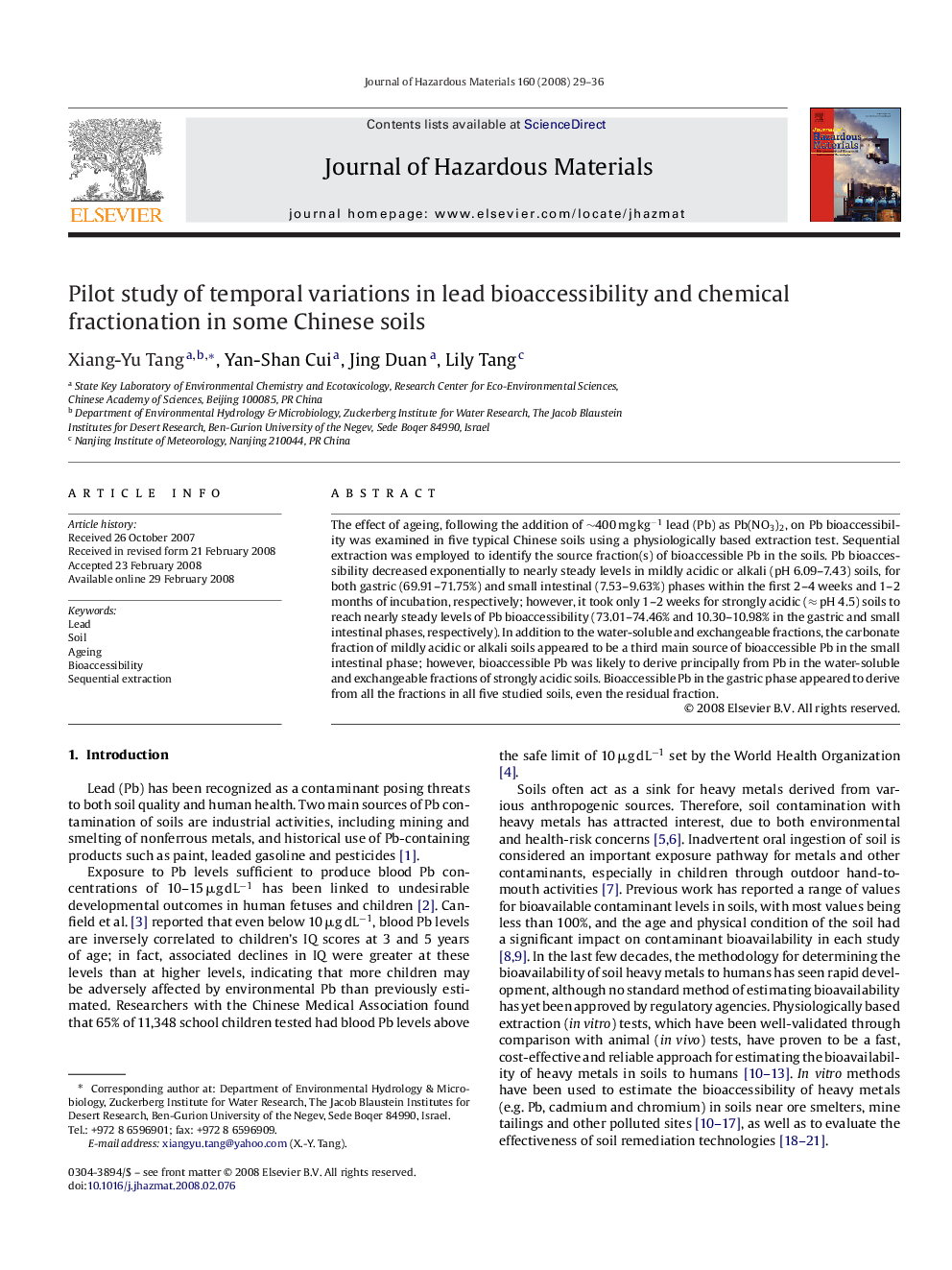| Article ID | Journal | Published Year | Pages | File Type |
|---|---|---|---|---|
| 582782 | Journal of Hazardous Materials | 2008 | 8 Pages |
Abstract
The effect of ageing, following the addition of â¼400 mg kgâ1 lead (Pb) as Pb(NO3)2, on Pb bioaccessibility was examined in five typical Chinese soils using a physiologically based extraction test. Sequential extraction was employed to identify the source fraction(s) of bioaccessible Pb in the soils. Pb bioaccessibility decreased exponentially to nearly steady levels in mildly acidic or alkali (pH 6.09-7.43) soils, for both gastric (69.91-71.75%) and small intestinal (7.53-9.63%) phases within the first 2-4 weeks and 1-2 months of incubation, respectively; however, it took only 1-2 weeks for strongly acidic (â pH 4.5) soils to reach nearly steady levels of Pb bioaccessibility (73.01-74.46% and 10.30-10.98% in the gastric and small intestinal phases, respectively). In addition to the water-soluble and exchangeable fractions, the carbonate fraction of mildly acidic or alkali soils appeared to be a third main source of bioaccessible Pb in the small intestinal phase; however, bioaccessible Pb was likely to derive principally from Pb in the water-soluble and exchangeable fractions of strongly acidic soils. Bioaccessible Pb in the gastric phase appeared to derive from all the fractions in all five studied soils, even the residual fraction.
Related Topics
Physical Sciences and Engineering
Chemical Engineering
Chemical Health and Safety
Authors
Xiang-Yu Tang, Yan-Shan Cui, Jing Duan, Lily Tang,
